Many think bodyweight training is simple — maybe even too simple — but when done correctly, it can be quite difficult. Using only your body teaches you to master every single muscle and take each one under complete control. Building a strong, defined body doesn’t require hours spent “working out” or a ton of equipment. But it does require an expert approach.
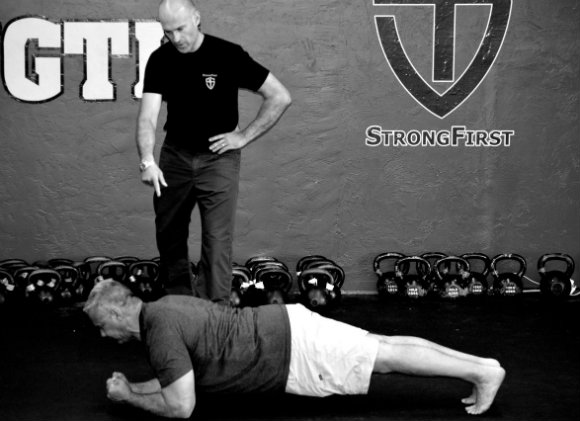
The Convenient Benefits of Mastering Bodyweight Training
- Most every bodyweight strength movement improves your balance, flexibility, mobility, and strength. When moving your body as one solid unit, as you do when you are training bodyweight skills properly, you not only build strength in your large muscles, but you also build your stabilizers, which means you increase your everyday strength.
- Bodyweight training can be done anywhere and doesn’t require a gym. Many of us are stuck in the middle of a daily hustle and bustle due to work and life in general. Our time is valuable, so why not make the most of it?
- Bodyweight training is also a safeguard to avoiding injury. While it is not impossible to get injured when practicing bodyweight skills, it is definitely much harder to do. With the massive amount of progressions and regressions at our fingertips through the StrongFirst system, anyone can benefit from adding bodyweight skills no matter your age, experience or fitness level.
Time Under Tension: Using Isometrics to Master Movement
As we all know, all the effort in the world doesn’t matter if what you’re practicing is done incorrectly. We want you to train smarter, not harder. Which will be simple, but not easy. Even many high-level athletes have not learned to master their bodies. So no matter your current fitness or strength abilities, a great place to begin is with isometric holds.
Watch the video below to learn how to create a solid foundation for all your movement, weighted or not. I’ll walk you through a series of holds and techniques, which are also explained in more detail below.
Holds in the Prone Position (Face Down)
Crocodile Breaths: Lay on your belly while placing your hands under your forehead. Spend time learning to slow your breath and fully breathe into your diaphragm, versus the typical short chest breath most of us resort to when we get tired or panicked. Proper breathing is important because tension and relaxation are the two sides of the performance coin. Bodyweight strength skills require full-body tension, so we must counter that with knowing how to fully relax between reps or sets of skill practice.
Tension Breath: This is done by making a “tsss” sound with your tongue against your closed teeth as you exhale. Mastering the tension breath will make all bodyweight skills easier. This is also known as breathing behind the shield. Once you practice it enough, you will not have to think about breathing this way. It will just happen, and you will be able to focus all your attention on the skill at hand.
This is akin to an approach we teach at the SFB called dominanta. Dominanta is having one main focus. In this case, once you master the required tension for each skill, you can steer all your energy into focusing on the movement, versus splitting your focus between getting tight and completing the skill.
Hard Style Plank: Start on all fours, extend your legs out straight behind you and lower to your elbows. You elbows should be slightly more narrow than your shoulders as this is more shoulder friendly. Hold your hard style planks with a neutral spine for :10 – :20 seconds.
The hard style plank can be progressed to straight arm planks, which are great for building stabilizers. Later advance to one-arm planks and one-arm-one-leg planks. Note: The plank can be done elevated for beginners who cannot yet hold their body off the ground.
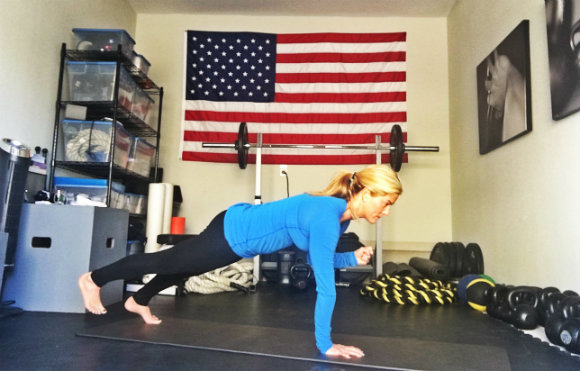
Holds in the Supine Position (Face Up)
In the supine position, we begin by training the body for a strong hollow position that will be key in many of the SFB skills. The best way to visualize the hollow is to think of a banana or a boat. In the most advanced hollow position, you would be fully extended from your fingertips to the very tips of your toes with straight arms over your head and with straight legs. The goal is to strengthen your trunk so your lower back is pressed firmly into the floor in this fully extended hold. It’s not just that your back doesn’t arch, but that it is actively pressing down.
After you build a solid hollow hold, you can progress to building more tension by adding resistance. There are several ways to do this:
- Have a training partner gently apply pressure to either your hands or feet, without allowing your partner to move you.
- If you do not have a training partner, you can load up a bar or a bell too heavy to lift and press against it or if at home you could use your sofa.
By adding this tension, you will quickly begin to feel your muscles fire and maybe even feel a few muscles you did not know you had. After building a solid hollow hold, you can either advance to hollow rockers for reps/sets (work up to 20/3) or take your hollow hold to the bar for hollow hangs, which will add another level of difficulty while also increasing your grip strength. Per Pavel – the most powerful neural generators are abs, glutes, and grip!
The next progression from hollow hangs would be to do either single-arm hollow hangs or flexed-arm hangs while maintaining a hollow body. Remember, the idea is to have your body move as one unit.
Incorporating Bodyweight Training Into Your Overall Plan
Each of the moves discussed starts with simple – not easy – holds, then progresses to some of our most advanced SFB skills. The plank builds a solid foundation for the one-arm or one-arm-one-leg push-up, and the hollow builds a solid foundation for the pull-up or handstand/handstand push-ups. We must pattern each hold, then practice regularly to perfect it in order to advance to each moving variation. Doing this will help you truly master moving your body as one solid strong unit.
GTG (grease the groove) is the best method to use when you begin learning bodyweight skills. If you are new to bodyweight strength practices, use high tension for 1-5 reps. Slow your reps to speed up your muscle gains.
While this type of strength practice can be used as a stand-alone training program for massive strength gains, do not feel obligated to maintain the purity of bodyweight-only training. As StrongFirst instructors, we like to master all our training modalities. Bodyweight can easily be combined with your SFG kettlebell work or SFL barbell work.
Adding bodyweight to your daily practice will make you aware of every single muscle in your body and allow you to take them under complete control for greater strength gains. So mastering your body will increase your strength in all other areas of your training.
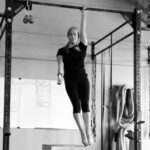
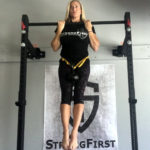
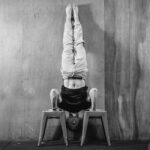
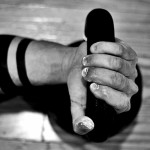


Hi, Can I train every day S&S and simultaneously using GTG – one-arm/one-leg pushup? Thank you
You can, Petr.
Coach Smith,
Thank you so much for this foundational explanation ma’am! I just practiced all of these progressions at home and needless to say I feel like I have worked my oblique systems quite well! I appreciate greatly when a fellow fitness professional cues a movement pattern that keeps the tension on the muscle and not the joint.
I am looking forward to the SFB course in Houston at the end of the month! Can’t want to pass on this wonderful information to my clients in a little more depth and explanation.
Thank you for a great article Karen! Learning to breathe properly is the most important initial skill in any training (and for life…). When I first learned to deadlift, I would breathe into my head. It was not until I almost blacked out from a single max attempt, that I finally learned to breathe into my belly. I have not had that sensation since. Generating and controlling tension through the breath will increase your performance and decrease your injury risk.
Thankyou for sharing your knowledge;look forward to future articles.
I have trained online with Karen–she is an excellent coach who knows how to get someone stronger without getting injured.
Great article on the basics Karen, really drives home the point of mastering the basics so we can later focus all our attention on the skills we are trying to develop. And thanks for the reply on that last article you wrote.
Great post and clear explanations Karen!
Personally I love bodyweight training for all of the reasons you mention and more. I enjoy the simplicity of moving the body through space whilst trying to continually polish and perfect basics like chin ups and dips.
It would be great to see a part 2/next steps post moving into programming drills for specific goals (i.e. increasing reps or progressing to more difficult moves).
Thank you Carl.
I will be working on additional articles that advance these skills and others. Until those articles are completed and posted, if you get a chance look at the last article that I posted with a BW program. I replied to a comment there about how to progress some to the skills and also how to program (waving the load) for some also.